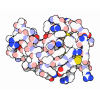[English] 日本語
 Yorodumi
Yorodumi- PDB-248l: THE RESPONSE OF T4 LYSOZYME TO LARGE-TO-SMALL SUBSTITUTIONS WITHI... -
+ Open data
Open data
- Basic information
Basic information
| Entry | Database: PDB / ID: 248l | ||||||
|---|---|---|---|---|---|---|---|
| Title | THE RESPONSE OF T4 LYSOZYME TO LARGE-TO-SMALL SUBSTITUTIONS WITHIN THE CORE AND ITS RELATION TO THE HYDROPHOBIC EFFECT | ||||||
 Components Components | T4 LYSOZYME | ||||||
 Keywords Keywords | HYDROLASE / O-GLYCOSYL / GLYCOSIDASE / BACTERIOLYTIC ENZYME | ||||||
| Function / homology |  Function and homology information Function and homology informationviral release from host cell by cytolysis / peptidoglycan catabolic process / cell wall macromolecule catabolic process / lysozyme / lysozyme activity / host cell cytoplasm / defense response to bacterium Similarity search - Function | ||||||
| Biological species |  Enterobacteria phage T4 (virus) Enterobacteria phage T4 (virus) | ||||||
| Method |  X-RAY DIFFRACTION / DIFFERENCE FOURIER / Resolution: 1.9 Å X-RAY DIFFRACTION / DIFFERENCE FOURIER / Resolution: 1.9 Å | ||||||
 Authors Authors | Xu, J. / Baase, W.A. / Baldwin, E. / Matthews, B.W. | ||||||
 Citation Citation |  Journal: Protein Sci. / Year: 1998 Journal: Protein Sci. / Year: 1998Title: The response of T4 lysozyme to large-to-small substitutions within the core and its relation to the hydrophobic effect. Authors: Xu, J. / Baase, W.A. / Baldwin, E. / Matthews, B.W. #1:  Journal: Science / Year: 1992 Journal: Science / Year: 1992Title: Response of a Protein Structure to Cavity-Creating Mutations and its Relation to the Hydrophobic Effect Authors: Eriksson, A.E. / Baase, W.A. / Zhang, X.J. / Heinz, D.W. / Blaber, M. / Baldwin, E.P. / Matthews, B.W. #2:  Journal: J.Mol.Biol. / Year: 1987 Journal: J.Mol.Biol. / Year: 1987Title: Structure of Bacteriophage T4 Lysozyme Refined at 1.7 A Resolution Authors: Weaver, L.H. / Matthews, B.W. | ||||||
| History |
|
- Structure visualization
Structure visualization
| Structure viewer | Molecule:  Molmil Molmil Jmol/JSmol Jmol/JSmol |
|---|
- Downloads & links
Downloads & links
- Download
Download
| PDBx/mmCIF format |  248l.cif.gz 248l.cif.gz | 47.5 KB | Display |  PDBx/mmCIF format PDBx/mmCIF format |
|---|---|---|---|---|
| PDB format |  pdb248l.ent.gz pdb248l.ent.gz | 33.4 KB | Display |  PDB format PDB format |
| PDBx/mmJSON format |  248l.json.gz 248l.json.gz | Tree view |  PDBx/mmJSON format PDBx/mmJSON format | |
| Others |  Other downloads Other downloads |
-Validation report
| Summary document |  248l_validation.pdf.gz 248l_validation.pdf.gz | 421.9 KB | Display |  wwPDB validaton report wwPDB validaton report |
|---|---|---|---|---|
| Full document |  248l_full_validation.pdf.gz 248l_full_validation.pdf.gz | 424.6 KB | Display | |
| Data in XML |  248l_validation.xml.gz 248l_validation.xml.gz | 10.2 KB | Display | |
| Data in CIF |  248l_validation.cif.gz 248l_validation.cif.gz | 14 KB | Display | |
| Arichive directory |  https://data.pdbj.org/pub/pdb/validation_reports/48/248l https://data.pdbj.org/pub/pdb/validation_reports/48/248l ftp://data.pdbj.org/pub/pdb/validation_reports/48/248l ftp://data.pdbj.org/pub/pdb/validation_reports/48/248l | HTTPS FTP |
-Related structure data
| Related structure data | 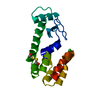 235lC 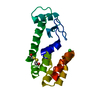 236lC 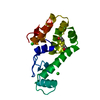 237lC 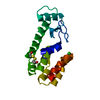 238lC 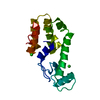 239lC 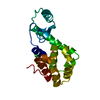 240lC 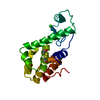 241lC 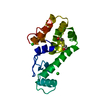 242lC 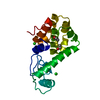 243lC  244lC 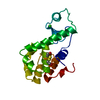 245lC 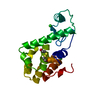 246lC 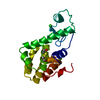 247lC 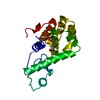 249lC 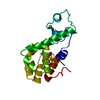 250lC  251lC C: citing same article ( |
|---|---|
| Similar structure data |
- Links
Links
- Assembly
Assembly
| Deposited unit | 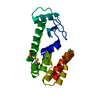
| ||||||||
|---|---|---|---|---|---|---|---|---|---|
| 1 |
| ||||||||
| Unit cell |
|
- Components
Components
| #1: Protein | Mass: 18544.201 Da / Num. of mol.: 1 / Mutation: I27A, I29A, C54T, C97A Source method: isolated from a genetically manipulated source Source: (gene. exp.)  Enterobacteria phage T4 (virus) / Genus: T4-like viruses / Species: Enterobacteria phage T4 sensu lato / Gene: T4 LYSOZYME GENE / Plasmid: M13 / Cellular location (production host): CYTOPLASM / Gene (production host): T4 LYSOZYME GENE / Production host: Enterobacteria phage T4 (virus) / Genus: T4-like viruses / Species: Enterobacteria phage T4 sensu lato / Gene: T4 LYSOZYME GENE / Plasmid: M13 / Cellular location (production host): CYTOPLASM / Gene (production host): T4 LYSOZYME GENE / Production host:  | ||||
|---|---|---|---|---|---|
| #2: Chemical | | #3: Chemical | ChemComp-HED / | #4: Water | ChemComp-HOH / | |
-Experimental details
-Experiment
| Experiment | Method:  X-RAY DIFFRACTION / Number of used crystals: 1 X-RAY DIFFRACTION / Number of used crystals: 1 |
|---|
- Sample preparation
Sample preparation
| Crystal | Density Matthews: 2.8 Å3/Da / Density % sol: 48.3 % | ||||||||||||||||||||||||||||||||||||||||||||||||
|---|---|---|---|---|---|---|---|---|---|---|---|---|---|---|---|---|---|---|---|---|---|---|---|---|---|---|---|---|---|---|---|---|---|---|---|---|---|---|---|---|---|---|---|---|---|---|---|---|---|
| Crystal grow | pH: 6.8 / Details: pH 6.8 | ||||||||||||||||||||||||||||||||||||||||||||||||
| Crystal grow | *PLUS pH: 6.7 / Method: batch method / Details: Remington, S.J., (1978) J. Mol. Biol., 118, 81. | ||||||||||||||||||||||||||||||||||||||||||||||||
| Components of the solutions | *PLUS
|
-Data collection
| Diffraction | Mean temperature: 300 K |
|---|---|
| Diffraction source | Wavelength: 1.5418 |
| Detector | Type: XUONG-HAMLIN MULTIWIRE / Detector: AREA DETECTOR / Date: Jan 3, 1995 |
| Radiation | Monochromatic (M) / Laue (L): M / Scattering type: x-ray |
| Radiation wavelength | Wavelength: 1.5418 Å / Relative weight: 1 |
| Reflection | Highest resolution: 1.9 Å / Num. obs: 20095 / % possible obs: 93 % / Observed criterion σ(I): 2 / Redundancy: 3.5 % / Rsym value: 0.043 / Net I/σ(I): 10.4 |
| Reflection | *PLUS Rmerge(I) obs: 0.038 |
- Processing
Processing
| Software |
| ||||||||||||||||||||||||||||||||||||||||||||||||||
|---|---|---|---|---|---|---|---|---|---|---|---|---|---|---|---|---|---|---|---|---|---|---|---|---|---|---|---|---|---|---|---|---|---|---|---|---|---|---|---|---|---|---|---|---|---|---|---|---|---|---|---|
| Refinement | Method to determine structure: DIFFERENCE FOURIER / Resolution: 1.9→10 Å / σ(F): 0 / Stereochemistry target values: TNT PROTGEO
| ||||||||||||||||||||||||||||||||||||||||||||||||||
| Solvent computation | Solvent model: BABINET SCALING / Bsol: 156.9 Å2 / ksol: 0.43 e/Å3 | ||||||||||||||||||||||||||||||||||||||||||||||||||
| Refinement step | Cycle: LAST / Resolution: 1.9→10 Å
| ||||||||||||||||||||||||||||||||||||||||||||||||||
| Refine LS restraints |
| ||||||||||||||||||||||||||||||||||||||||||||||||||
| Software | *PLUS Name: TNT / Version: 5E / Classification: refinement | ||||||||||||||||||||||||||||||||||||||||||||||||||
| Refinement | *PLUS Rfactor all: 0.16 | ||||||||||||||||||||||||||||||||||||||||||||||||||
| Solvent computation | *PLUS | ||||||||||||||||||||||||||||||||||||||||||||||||||
| Displacement parameters | *PLUS | ||||||||||||||||||||||||||||||||||||||||||||||||||
| Refine LS restraints | *PLUS
|
 Movie
Movie Controller
Controller


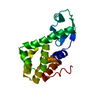
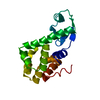
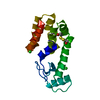
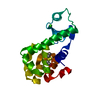

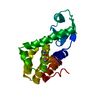
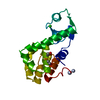

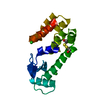

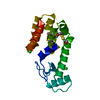
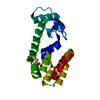
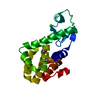
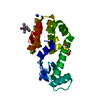
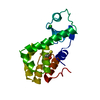
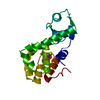
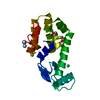

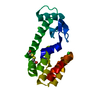
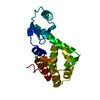
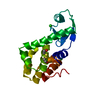
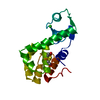
 PDBj
PDBj